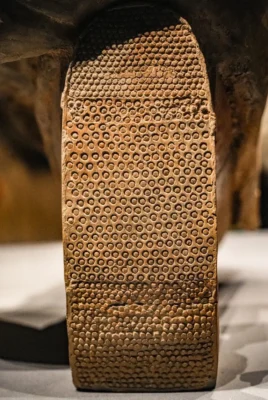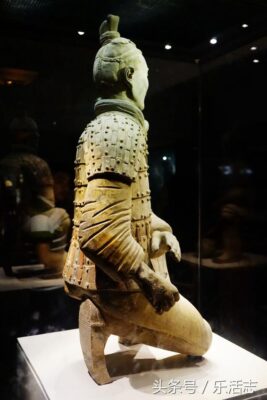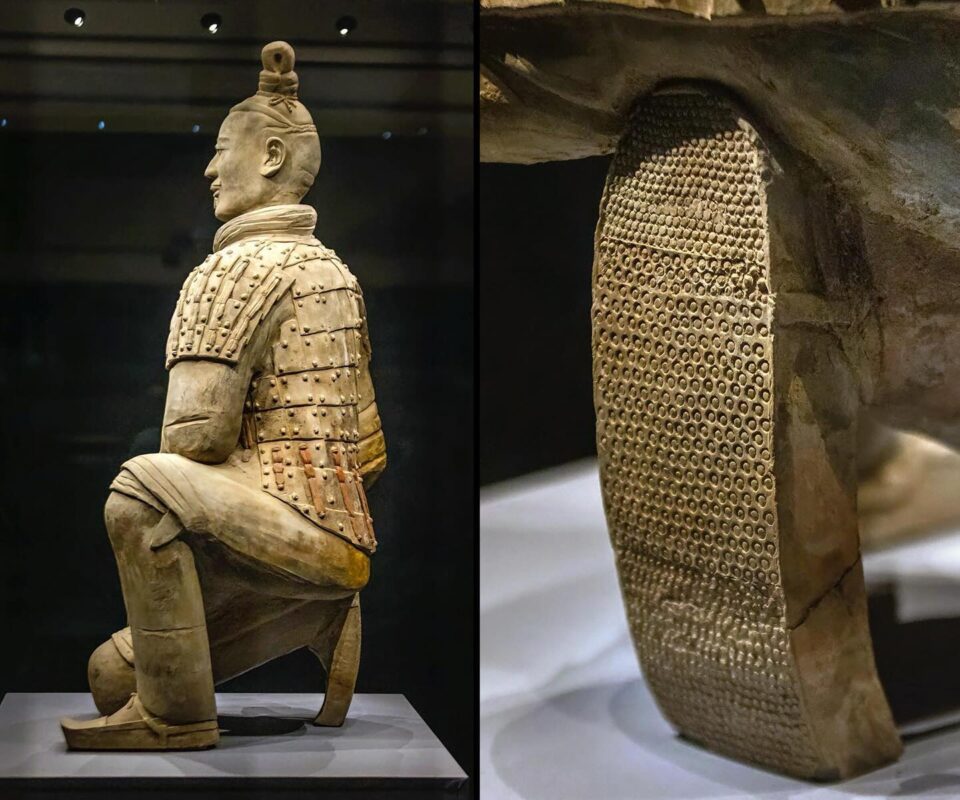The Terracotta Warriors, an iconic symbol of ancient China, are perhaps one of the most extraordinary archaeological discoveries of all time. These life-sized clay figures were constructed to guard the tomb of Qin Shi Huang, the first emperor to unify China. Each warrior, crafted meticulously with unique features, was meant to protect the emperor in the afterlife. Notably, one of the most remarkable figures is the only terracotta warrior found completely intact, offering a rare insight into the craftsmanship and grandeur of ancient China. Follow archeology.dulichvn.net to discover many hidden mysteries that have yet to be discovered.

The Unique Terracotta Warrior: A Masterpiece of Ancient Craftsmanship
Remarkable Detail on the Warrior’s Footwear
One of the standout features of the intact terracotta warrior is the fine detail on its footwear. The bottom of his shoe shows a careful consideration of grip and traction, a testament to the advanced understanding of ergonomics and practical design by artisans over 2,200 years ago. This detail highlights the dedication to realism and functionality that went into crafting each warrior.
Attention to Detail in Every Warrior
The terracotta warriors were created with astonishing precision and uniqueness. While this particular figure is complete, no two warriors are identical—out of the 8,000 figures in total, each one possesses distinct features, such as different hairstyles, facial expressions, and armor styles. The high level of individualization reflects the skill of the artisans and the significance of each figure in the imperial burial complex.
Restoration and Preservation of the Warriors
Although the warriors were initially buried intact, their preservation was far from certain. After the tomb was looted and burned shortly after its completion in 210–209 BC, the roof collapsed, crushing many of the warriors. Modern restoration efforts have painstakingly brought these figures back to life, allowing visitors today to admire their remarkable craftsmanship. Unfortunately, much of the original coloring of the warriors faded away when exposed to air and sunlight during the 1970s excavation, a loss that remains one of the greatest challenges in preserving these ancient figures.

The Mysterious Tomb of Qin Shi Huang
An Untouched Tomb of the First Emperor
The tomb of Qin Shi Huang remains largely unexplored. Despite being discovered over 40 years ago, the tomb has never been opened, and its exact contents remain shrouded in mystery. Ancient historians describe the tomb as a grand, self-contained kingdom complete with a palace adorned with pearls to mimic the night sky. The desire to keep the emperor’s final resting place secure led to elaborate precautions, including the entombment of the workers who built it.
Mercury and the Mystique of the Tomb
Historical accounts from Sima Qian, a famous Han dynasty historian, claim that mercury was used to create miniature rivers, including the Yellow River and Yangtze River, within the tomb. Modern tests have confirmed high levels of mercury in the soil surrounding the tomb, providing evidence of this mysterious technique. This innovation may have been used to recreate the rivers of China, adding to the immense symbolic and ritual significance of the emperor’s burial.
A Deadly Elixir of Immortality
In an interesting twist, Qin Shi Huang is said to have died from mercury poisoning. At the time, it was believed that mercury pills could grant immortality. Ironically, these very substances that were used in the construction of his tomb may have contributed to his untimely demise. This fact adds another layer of mystery to the story of the first emperor, as his quest for eternal life ultimately led to his early death.

See more: Statue of Tutankhamun A Testament to Ancient Egyptian Beliefs
Legacy of the Terracotta Warriors
The Terracotta Army as a Monument to Qin Shi Huang’s Power
The terracotta warriors serve as a testament to Qin Shi Huang’s power and the grandeur of his rule. Designed to protect him in the afterlife, these figures reflect the emperor’s desire to retain control even in death. The army is not only a display of military strength but also an expression of his authority, emphasizing the emperor’s belief in his eternal reign.
Cultural and Historical Significance
Today, the Terracotta Army is one of China’s most significant cultural landmarks. It has become a symbol of the ancient civilization and a powerful reminder of the lengths to which the first emperor went to ensure his immortality. The army’s discovery has had a profound impact on our understanding of ancient Chinese culture, especially the role of artisanship, politics, and rituals in the Qin dynasty.
A Fascinating Archaeological Discovery
The discovery of the Terracotta Warriors in the 1970s was a groundbreaking moment in archaeology, providing a window into ancient China. Over 8,000 warriors, along with chariots and horses, have been uncovered so far, revealing a civilization’s commitment to art, craftsmanship, and the afterlife. The terracotta warriors continue to inspire awe and remain one of the most remarkable archaeological finds in history.

Conclusion: Unveiling the Mysteries of Qin Shi Huang’s Legacy
The Terracotta Warriors of Qin Shi Huang represent more than just lifelike clay statues—they are the embodiment of the emperor’s power, vision, and quest for immortality. The intricate details, from the warrior’s footwear to the mysterious use of mercury in the tomb’s construction, offer a glimpse into the ancient world and the complexity of ancient Chinese burial practices. Even though the tomb itself remains unopened, the discovery of the Terracotta Army continues to fuel curiosity, and its secrets may one day reveal even more about the first emperor of unified China.


CÁC TIN KHÁC
Mary Walton: The Forgotten Inventor Who Helped Clean Up America’s Cities
Tomb of Queen Nefertari in the Valley of the Queens, Egypt
Discover the Hypostyle Hall of the Temple of Hathor at Dendera
Venus de Losange: Unveiling the Mystery of a 20,000-Year-Old Paleolithic Icon